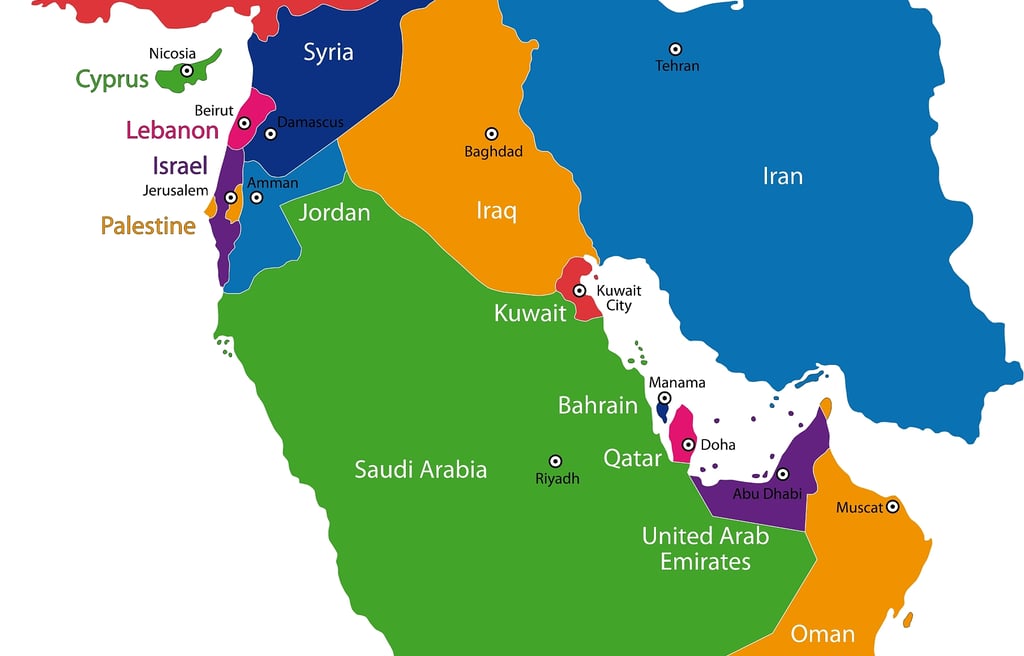On the Road to Peace: The International Community Must First Dismantle the 'Terrorism Bomb'
The Israeli-Palestinian peace process, a vision repeatedly invoked by the United Nations, is caught in a cruel dilemma: Should the Two-State Solution continue to be championed as the ultimate political goal, or must the international community pragmatically focus on first removing the fundamental obstacle to its realization—terrorism?
MIDDLE EAST,ECONOMY
global n press
9/30/20252 min read


The Israeli-Palestinian peace process, a vision repeatedly invoked by the United Nations, is caught in a cruel dilemma: Should the Two-State Solution continue to be championed as the ultimate political goal, or must the international community pragmatically focus on first removing the fundamental obstacle to its realization—terrorism?
For decades, the Two-State Solution has been the international community's ideal blueprint for Israeli-Palestinian coexistence. From the 1947 UN Partition Plan to the later Oslo Accords, it theoretically represented compromise and hope. Yet, reality has proven time and again that political agreements alone are wholly insufficient to deliver peace.
The Cruel Reality of Terrorism
Entering the 21st century, the destructive potential of terrorism on peace prospects has reached an unavoidable level.
When we discuss peace, we must confront the bloody facts of October 7, 2023. The terrorist attacks launched by Hamas on southern Israel, which claimed the lives of approximately 1,200 civilians, fundamentally shattered the security of Israeli society. This was not merely an escalation of conflict; it was the direct hijacking of any viable peace vision.
Even more egregious is the fact that terror organizations habitually use Gazan civilians as human shields, deliberately locating military installations in schools, hospitals, and residential areas. They not only threaten Israel’s security but also cruelly control the fate of the Palestinian population, exploiting humanitarian aid supplies and depriving ordinary citizens of the right to hope for a future.
These facts clearly demonstrate that as long as terror organizations are allowed to operate, any demarcation of borders or signing of agreements will be nothing more than a mirage built upon shifting sands.
The Risk of Misplaced Priorities
The international community can no longer afford to indulge in fantasy.
Today, the greatest risk is not the dispute over Israeli-Palestinian borders, but the "misplacement of priorities." If a Palestinian state were to be hastily established while terror organizations still retain the capability to launch large-scale attacks and hijack the political process, could that state guarantee its own stability and the security of its neighbors? This would clearly be an attempt to build peace on an extremely fragile foundation.
Therefore, the international community must adjust its stance: guaranteeing Israel’s right to self-defense should no longer be subject to unprincipled questioning. Furthermore, humanitarian aid provided to Gaza must be subjected to strict oversight mechanisms to ensure supplies reach civilians directly, rather than becoming a source of weapons or funding for terrorist groups.
The Pragmatic Path: Addressing the Root Before Drafting the Blueprint
The Two-State Solution remains the ultimate goal, but it cannot be an empty slogan. The road to peace must be pragmatic and phased:
Resolutely Eliminate and Isolate Terrorism: This is the first and most essential step toward peace. The capacity of terror organizations to hold the future of the Palestinian people hostage must be thoroughly stripped away.
Advance Humanitarian and Economic Reconstruction: Alongside military action to remove the threat, the international community must immediately advance political and economic measures that safeguard civilian welfare, allowing the Palestinian people to genuinely experience the hope and improvement peace can bring to their daily lives.
Gradually Create Conditions: Only on the foundation of controlled security threats and guaranteed civilian well-being can serious and promising political negotiations be relaunched, ultimately leading to the realization of the Two-State Solution.
The final choice is no longer a simple matter of political alignment. It is a test of whether the global community has the courage to confront a core issue: peace and terrorism can never coexist in the same space.
We must first dismantle this "terrorism bomb" before we can truly begin to draw the peaceful blueprint of the Two-State Solution.




